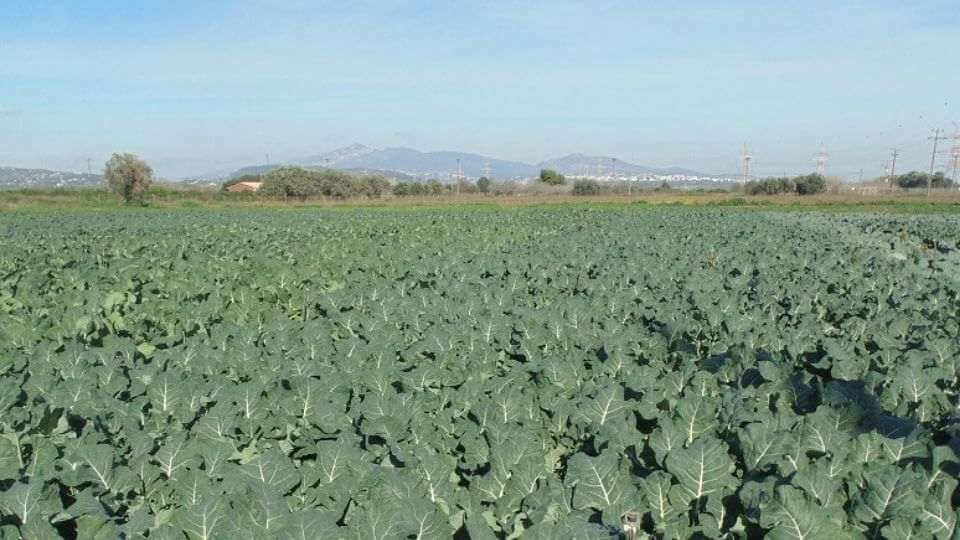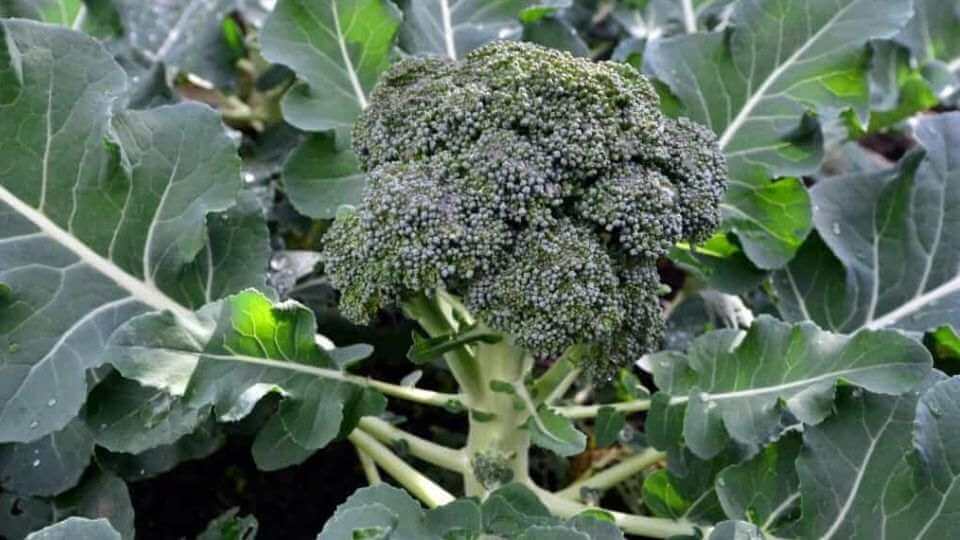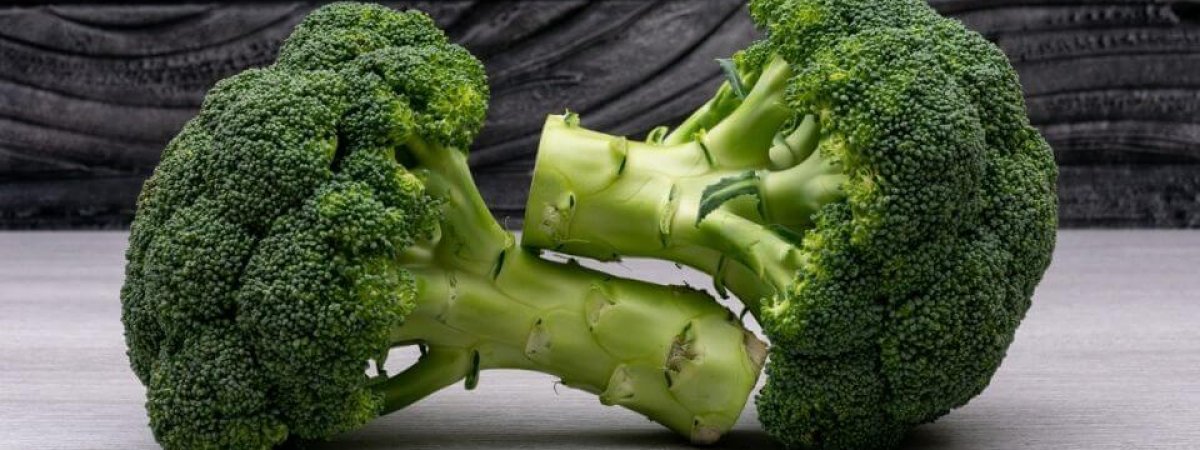Broccoli is a winter crop – hardy biennial planted annually. The cruciferous veggies grow to a height of 18 to 36 inches and boast thick and broad leaves on a thick stalk. Broccoli may have single or multiple flower heads of little blue-green buds.
It is suggested to pick the broccoli heads and consume them before the flower buds turn into little yellow flowers. In the summer season or long days of warm temperatures, broccoli bolts and move to seed.
If you want to know how to grow broccoli in your home garden, it is essential to follow an elaborated guide on the topic, which we got for you here!
From the right conditions, planting, growing to harvesting and storing broccolis, you will find every information in the next 10 minutes. Read on!

How to grow broccoli?
Like most cruciferous vegetables, broccoli also comes in wide varieties for you to choose from. Let’s start by knowing about the different varieties of green vegetables.
Varieties of broccoli
Blue wind f1: It is a better version of the ‘Packman’ type and thrives in all the weather conditions. The type takes around 49 days to reach maturity.
Early purple sprouting broccoli: These are the sweeter types as compared to the green broccolis. However, they are biennial with slower growth and harvested in the following spring season. The type takes 80 to 115 days to reach maturity.
Calabrese and de Cicco: A popular broccoli variety that produces flower heads early and grows plenty of side shoots while reaching maturity in around 60 days.
Romanesco: This one is also a famous variety known for the lime-green heads and attractive spiralling pattern, flavor and texture. It takes 75 days to reach maturity.
Broccoli Raab: Also called Brassica campestris, it is a different yet close variety to the most common garden broccoli. Some other popular names to address the type include broccoli di Rapa, turnip broccoli or rappone.
It doesn’t form a large flower head. Gardeners grow this variety for the leaves. It takes 25-35 days for maturity.
Right time for growing broccoli
- Being a winter crop, broccoli grows best when planted in late winter or early spring to have a summer yield or use it as a mid-to-late fall crop.
- High temperatures affect the broccoli heads. So, make sure your vegetable is harvested before extreme warm temperatures set in.
- There are broccoli heads that can germinate well in a soil temperature of 40°F or even less. However, a little warmer soil temperature should be preferred for fast development.
- When growing broccoli in spring, you can start indoors or outdoors, weeks before the last spring frost. We would recommend planting broccolis indoors six to eight weeks before the last frost date in your region.
- If you want to start growing the vegetable outdoors, the recommended planting time is two to three weeks before the last frost.
- For the fall broccoli planting, start by sowing seeds 85-100 days before the first frost fall. The soil and atmospheric temperatures are usually high at this time of the year.
Preparation of planting site
- Broccoli demands a good amount of light (full) for at least 6-8 hours each day. Inadequate sunlight for the green crop may lead to thin, leggy and subpar heads.
- Make the soil moist, fertile and ensure it is well-drained for growing broccoli.
- The crop requires soil with a pH range of 6-7 (slightly acidic).
- If you wish to increase the fertility of the soil before planting the vegetable, add 2-4 inches of rich compost or a layer of manure in early spring.

Planting broccoli
- When you start by planting the broccoli seeds outdoors, make sure to sow them 3 inches apart and half an inch deep.
- As soon as you notice the seedlings growing to a height of 2-3 inches, opt for thinning them to ensure the plants are at a distance of 12-20 inches.
- For home gardeners growing broccolis indoors, transplant them in the garden after 4-6 weeks. Keep them 12-20 inches away from each other and dig the holes deeper than the container depth indoors.
- The rows of broccoli must be 3ft apart. When planted closer, the yield will include smaller flower heads.
- Water them properly while planting.
Harvesting Broccoli
- When you see the broccoli heads growing into a diameter of several inches, know it’s time to harvest.
- Look for green, firm, and compact heads. In the case of the varieties that form side shoots, the florets may be of smaller size.
- If not harvested on time, they will loosen up and form yellow flowers.
- Cut off the main stalk of your broccoli at an angle inches underneath the flower head. Use a sharp knife. Do not give up plant care as the plant may continue growing broccoli heads and side shoots.
- Store the fresh and dry broccoli in the fridge for about 5 days (use a non-airtight container). Remember to wash the stored broccoli before use.
Broccoli is good in freezing. To freeze, cut small pieces of the green florets and blanch the fresh broccoli by dipping in boiling water for a minute. Take it out and immediately plunge into ice water. Drain, dry and pack the broccoli pieces into airtight plastic bags.
Taking care of broccoli
- The best conditions for broccoli growth includes an outdoor temperature of 65°F to 70°F.
- Ensure fertilizing broccoli after three weeks of transplantation into the garden using a low-nitrogen solution.
- The young plants should be thinned when 2-3 inches of height, with a gap of 12-20inches between them.
- Regular watering should be maintained for consistent soil moisture, mainly in drought season. When growing broccoli, you should water the crop 1-1.5 inches every week.
- While watering, don’t get the broccoli heads wet (especially the ones still developing). This may promote rot.
- The roots of broccoli are quite shallow for any disturbance.
- Try suffocating the weeds using mulch. Mulching also promotes maintaining adequate soil temperatures.
- To minimize the chances of pests and diseases, use row covers.
- When you harvest the first broccoli head and wait for the second to grow, keep feeding and watering the plant actively as before.
Pests and diseases affecting the growth of broccoli
Aphids: If you see the green leaves curling up for no reason, know that insects are sucking up the plant’s sap. To get away with aphids, use soapy water to wash both sides of the leaves.
Cabbage loopers: These are green caterpillars, right between the veins creating small holes on the crop’s leaves. If the problem is small, you can pick the insects by hand or use Bacillus thuringiensis (natural, bacterial pesticide) to control the situation.
You can also use a floating row cover to prevent caterpillars from feeding on your crop.
Clubroot: If your soil gets infected by clubroot, you will see the plant wilting fast. When the fungus attacks a broccoli plant, it must be entirely removed along with the roots and root tendrils. Another sign of clubroot infection is gnarled and misshapen roots.

Avoid composting the plant and increase the pH level to over 7.2. You may also require to sterilize the garden soil.
Downy Mildew: These are yellow patches on the broccoli leaves caused as a result of extremely moist weather. Ensure the leaves are dry and the atmosphere has proper air circulation.
Nitrogen deficiency: When you see the bottom of your plant’s leaves turn yellow and it moves towards the top of the plant, nitrogen is deficient. You need to use a fertilizer or blood meal to give it high nitrogen.
Other pests and diseases affecting the growth of broccolis include whiteflies, white rust, cabbage root maggots, and cabbage worms.
In a Nutshell
Broccoli is the perfect pick for spring or fall planting as they are decent winter crops. Now that you have a clearer idea of how to grow broccoli, try out planting the cruciferous veggies in your home garden and fresh greens for a healthy diet. You can store them for prolonged use.
You may also like to read
How to Grow Cauliflower? Start with Your Vegetable Garden at Home!






